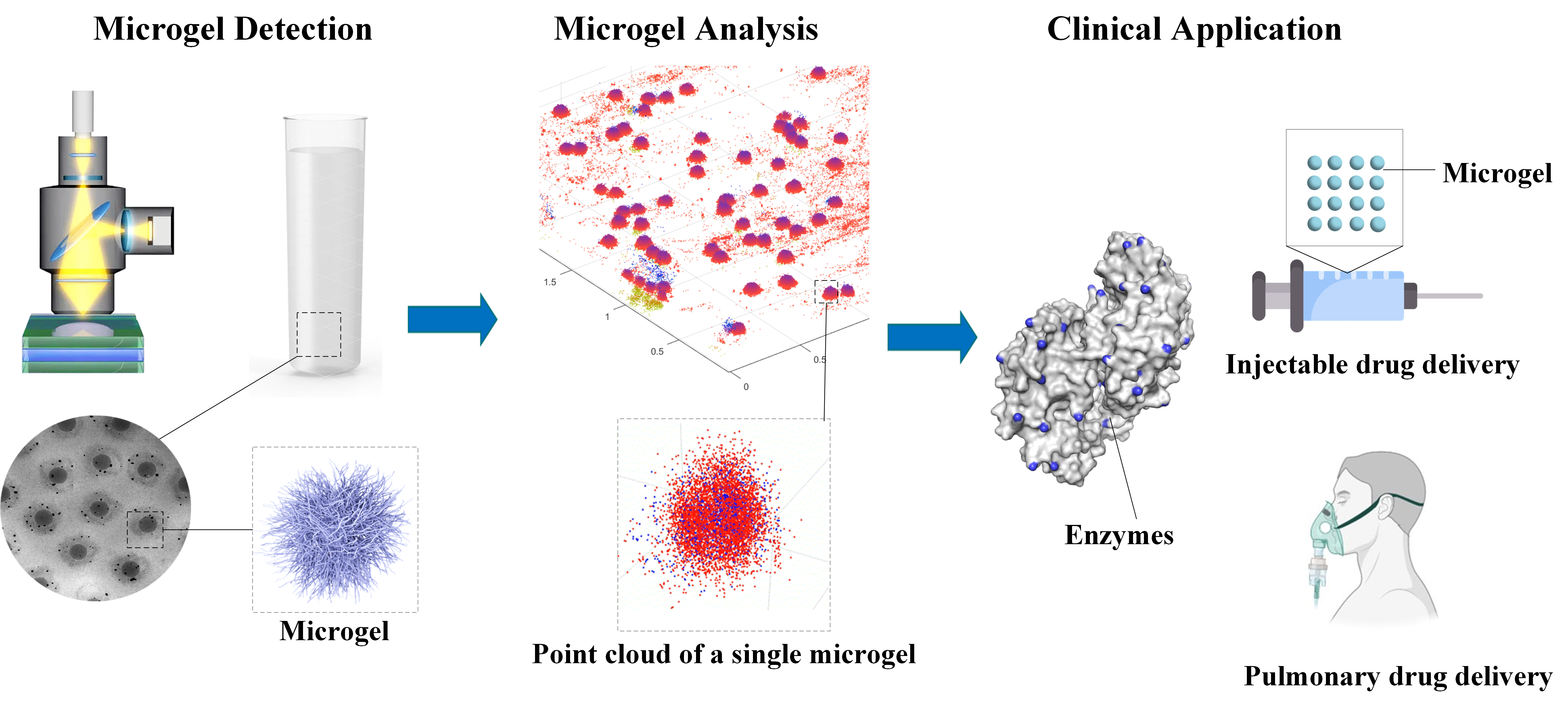
Quantitative Analysis and Visualization Methods for Responsive Microgel Microscopy Data
Motivation
Microgels observed by single molecule localization microscopy appear as point clouds with dots corresponding to dye molecules. In the G3N project, we will develop computational tools for comprehensive quantitative analysis of point cloud data and calculate features that fully characterize a microgel, as well as measure and visualize changes in soft and deformable microgels under various experimental conditions. Generative models will allow us to make predictions that can be tested experimentally. Combining point cloud data with pixel data from other modalities complements the computational toolkit and promises a more complete structural description of microgels.
Scientific Questions
Localization-based fluorescence microscopy techniques generate point clouds whose points correspond to the positions of individual dye molecules in the microgel. Therefore, algorithms are developed to extract features from the point clouds to describe different microgels. Furthermore, generative models are developed that ultimately allow a quantitative description of the shape and density of microgels under different experimental conditions.
Partners
- Prof. Dr. Dominik Wöll, Institute of Physical Chemistry, RWTH Aachen University
External Funding
- DFG Research Grant 985, “Quantitative analysis and visualization methods for responsive microgel microscopy data (G03*)”, Project nr. 191948804
Contact
Publications

Quantitative Analysis and Visualization Methods for Responsive Microgel Microscopy Data
Motivation
Microgels observed by single molecule localization microscopy appear as point clouds with dots corresponding to dye molecules. In the G3N project, we will develop computational tools for comprehensive quantitative analysis of point cloud data and calculate features that fully characterize a microgel, as well as measure and visualize changes in soft and deformable microgels under various experimental conditions. Generative models will allow us to make predictions that can be tested experimentally. Combining point cloud data with pixel data from other modalities complements the computational toolkit and promises a more complete structural description of microgels.
Scientific Questions
Localization-based fluorescence microscopy techniques generate point clouds whose points correspond to the positions of individual dye molecules in the microgel. Therefore, algorithms are developed to extract features from the point clouds to describe different microgels. Furthermore, generative models are developed that ultimately allow a quantitative description of the shape and density of microgels under different experimental conditions.
Partners
- Prof. Dr. Dominik Wöll, Institute of Physical Chemistry, RWTH Aachen University
External Funding
- DFG Research Grant 985, “Quantitative analysis and visualization methods for responsive microgel microscopy data (G03*)”, Project nr. 191948804


